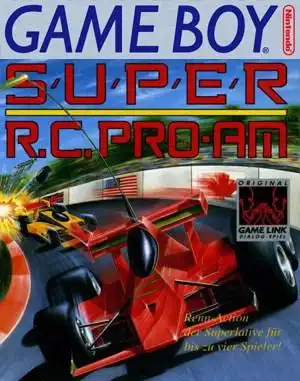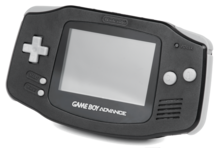Pocket-Sized Racing Fun: Revisiting Super R.C. Pro-Am on Game Boy
The click of the D-pad, the satisfying thwack of a Game Pak sliding into place, the unmistakable green-tinged screen coming to life – these are the sensory memories that transport us back to the glory days of the original Game Boy. And nestled among the platformers and puzzle games was a gem of a racer: Super R.C. Pro-Am.
While many retro enthusiasts fondly recall its older sibling on the NES, the Game Boy version offered a unique, portable take on Rare's successful formula. Let's fire up our tiny engines and take a look back at what made this handheld racer a classic in its own right.
Back to the Track: What Was Super R.C. Pro-Am?
Released for the original Game Boy, Super R.C. Pro-Am took the core concept of the NES hit – isometric radio-controlled car racing – and shrunk it down for gaming on the go. Developed by Rare and published by Nintendo, it challenged players to navigate tricky tracks from an overhead perspective, battling AI opponents and the clock.
It wasn't just a straight port; the Game Boy version brought its own flavor, designed specifically for the monochrome screen and limited controls of the classic handheld.
Under the Hood: Gameplay Mechanics
Just like the original, the goal in Super R.C. Pro-Am was simple yet addictive: finish in the top three against three computer-controlled cars to advance to the next track. Failure meant starting over (or using a continue if you had any left).
The gameplay loop revolved around racing, avoiding hazards, and strategically using power-ups scattered across the track:
- Speed Boosts (Zippers): Hit these for a temporary burst of speed. Essential for gaining an edge or recovering from a mistake.
- Weapons (Missiles, Bombs): Deploy these to briefly stun or slow down your opponents. Knowing when and where to use them was key.
- Car Upgrades: Collect parts like faster motors, better tires, and stronger batteries to permanently improve your car's performance over time.
- Roll Cages: Extra protection against crashes and enemy fire.
- Letter Collection: Spell out "NINTENDO" by collecting letters scattered on the track. Doing so would instantly upgrade your car to a much faster, more powerful model, often turning the tide of a race.
Tracks were littered with obstacles like oil slicks, water puddles, and barriers that could spin you out or slow you down, adding an extra layer of challenge to the already tight races.
NES vs. Game Boy: What's Different?
Comparing Super R.C. Pro-Am to its NES predecessor is natural. While sharing the core isometric racing concept, the Game Boy version offered some distinct differences:
- Tracks: Super R.C. Pro-Am featured a different set of tracks compared to the NES game, offering new layouts and challenges for fans of the original.
- Graphics & Sound: Adapted for the Game Boy's hardware, the visuals were simpler and the sound effects more basic, but still captured the essence of the game.
- Multiplayer: A significant addition for the Game Boy era was the support for 2-player racing via the Game Link Cable! This was a feature missing from the NES original and added significant replayability if you had a friend (and cables!).
- Opponents: While the NES version typically featured three opponents, the Game Boy version also stuck to three AI competitors, keeping the race tight.
For many, Super R.C. Pro-Am wasn't just a port; it was their first experience with the series, a familiar friend during long car rides or quiet afternoons.
The Legacy Lap: Why It Still Matters
Like its NES counterpart, Super R.C. Pro-Am contributed to the legacy of isometric racers and vehicular combat games. While the NES version is often cited as an influence on games like Mario Kart and Micro Machines, the Game Boy version solidified the formula's success on a portable platform.
It's remembered fondly by those who spent hours trying to spell "NINTENDO" or just trying to survive another lap without hitting an oil slick. It was a testament to Rare's ability to craft engaging gameplay, even on less powerful hardware.
How to Play Today?
Want to relive those tiny screen thrills? Finding an original Game Boy and a Super R.C. Pro-Am cartridge is always an option for the purists. Alternatively, you can explore emulation. Game Boy emulators are widely available for various platforms, allowing you to experience the game on modern devices.
While the NES version appears in collections like Rare Replay, the Game Boy version is less commonly re-released, making original hardware or emulation the primary ways to play today.
FAQ
Q: Is Super R.C. Pro-Am the same game as the NES R.C. Pro-Am? A: No, they are different games. Super R.C. Pro-Am for the Game Boy features different tracks and adds Link Cable multiplayer, though they share core gameplay mechanics and the isometric perspective.
Q: How many tracks are in Super R.C. Pro-Am? A: The game features dozens of tracks, though like the NES version, many later tracks are variations on earlier layouts with increased difficulty and hazards.
Q: Can you play multiplayer in Super R.C. Pro-Am? A: Yes! Unlike the NES original, the Game Boy version supports 2-player racing via the Game Link Cable.
Q: Who developed Super R.C. Pro-Am? A: It was developed by Rare, the same company behind the NES R.C. Pro-Am and many other classic Nintendo titles.
Final Lap
Super R.C. Pro-Am might live in the shadow of its more famous NES sibling for some, but for a generation of Game Boy owners, it was the definitive R.C. racing experience. Its challenging tracks, strategic power-ups, and the thrill of spelling "NINTENDO" made it a standout title on the handheld. It's a little piece of portable retro gaming history that's well worth revisiting.


